10 of the best Soviet aces of World War II (part of 2)
Arseny Vasilievich Vorozheikin
Arseny V. Vorozheikin - twice Hero of the Soviet Union, a participant in the battles on Khalkhin-Gol, the Soviet-Finnish and World War II. In total, during the period of his combat activity, he made more 400 combat missions, conducted 90 air battles, in which he personally shot down an 51 enemy aircraft and also 14 in the group. At the same time on 30 air battles in the sky over Khalkhin Gol had 6 his personal victories and 13 planes shot down in a group. He flew fighters I-16, Yak-7, Yak-3 and Yak-9.
Arseny Vorozheikin was born on October 28 1912 year in an ordinary peasant family from the Nizhny Novgorod region. From 1931, he was in the ranks of the Red Army, before the war he graduated from the Kharkov military flight school. The fighting baptism of Vorozheykin fell on pre-war years. In the summer of 1939, he managed to distinguish himself in the sky over Khalkhin Gol. In that conflict with the Japanese, Arseny Vorozheikin, being a commissar of the 22 Fighter Squadron, made more than 160 combat sorties, conducted 30 air battles and personally shot down 6 enemy planes and 13 machines in the group. During the fighting at Khalkhin Gol was presented to the Order of the Red Banner. It is characterized by the fact that in one of the battles he was seriously injured, but, having got out of the hospital ahead of schedule, he “lost” a certificate of his cancellation of the flight work and bravely reported about his return to the unit.
Before the start of World War II, Arseny Vorozheikin managed to take part in the winter war with Finland. The beginning of the war, the future pilot-ace met as commander of the squadron of the fighter air regiment, located near Yerevan. But in this post he did not last long. At the end of June 1941, an unpleasant episode occurred that “saved” the pilot from the battles of the initial period of the war.
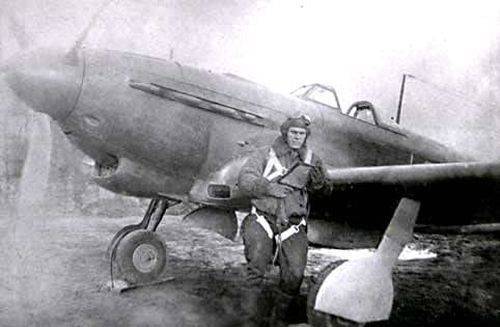
Fighters I-153 “The Seagull” from Vorozheykin’s squadron were alerted and intercepted nine Soviet bombers DB-3. The dark camouflage of these two-engined bombers confused the whole thing, and the load of the bombs did not allow heavy vehicles to land at the request of Arseny Vorozhaykin. The warning lines issued by the lead "Seagull", one of the pilots took over the attack and riddled the closing bomber, killing its tail gunner. As a result, this unpleasant episode was hushed up, but the commanders of the fighter and bomber squadrons who took part in it, sent, just in case, to study at the academy.
As a result, Arseny Vorozheikin was only able to return to the army in September 1942. He was appointed with a downgrade, ostensibly due to the lack of front-line experience, as a senior political commander of the 728 th Fighter Aviation Regiment. From that day until the end of the war, the pilot continued to make combat flights, fighting on the Kalininsky, Voronezh, and 1 Ukrainian Fronts.
Until March 1943, the ace pilot flew the I-16 fighter. In his first combat mission to escort attack aircraft, the landing gear was not removed from Vorozheykin’s plane. Despite this, the pilot continued to perform his combat mission, and when the air battle broke out, he managed to hold out alone against the enemy’s six Me-109s until help arrived. During the fighting on the Kursk Bulge he flew already on the Yak-7B fighter. From October 1944, Arseny Vorozheikin held the position of senior instructor-pilot of the Main Directorate of Combat Training of Frontal Aviation of the Red Army, but at the same time continued to make combat missions until the very end of the war.
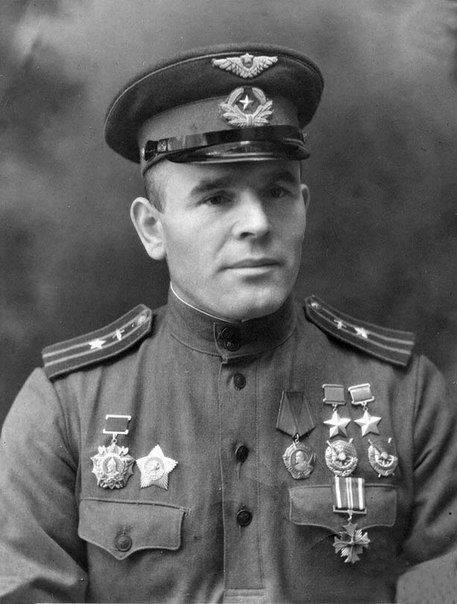
He is one of the outstanding Soviet pilots of the war period, one of the few who managed to distinguish himself even before World War II. Pilot ace had his inimitable style of air combat. For example, to improve visibility, almost until the end of 1943, he flew with an open cockpit lantern. Cautious in recklessness, Arseny Vorozheikin was not a supporter of frontal attacks, which were routinely attributed to Soviet fighter pilots, and always sought to get out of them at the very last moment. Being a real master of aerobatics, he was not afraid to make abrupt maneuvers, from which he often darkened his eyes. At the same time, he liked to use any tricks that could mislead the enemy. Above all, Vorozheikin became famous for his excellent shooting accuracy, which helped him many times in battle.
After the war, continued to serve in the Soviet Air Force. He rose to the rank of major general, in 1957 he resigned for health reasons. He lived in Moscow, where he was engaged in literary activities. He wrote the book "Under us Berlin", "Soldiers of the sky", "Stronger than death" and many others. Died 23 May 2001, at the age of 88 years, buried at Troyekurovsky cemetery in Moscow.
Dmitry Borisovich Glinka
Dmitry Borisovich Glinka - Twice Hero of the Soviet Union. During World War II, he made about 300 combat missions, conducted approximately 100 air battles, in which he personally shot down 50 enemy planes. He flew fighters Yak-1 (9 downed) and P-39 "Air Cobra" (41 downed aircraft).
Dmitry Borisovich Glinka came from an ordinary mining family. Born in Ukraine 10 December 1917 of the year. From 1937 in the service in the Red Army, in 1939, he graduated from the flight school. Unlike many Soviet aus pilots from the top ten, Dmitry Glinka did not pass the school of instructors, but until January 1942, when he finally got to the front, he served in the combat unit and made several hundred sorties on the I-16 fighter.
Dmitry Glinka's baptism of fire took place in the Crimea as part of the 45 th Fighter Aviation Regiment, which flew Yak-1 aircraft. It was in Crimea that he opened the scoring for his air victories by shooting down a Ju-88 bomber. In heavy air battles on four fronts (Crimea, Southern, North Caucasus, Transcaucasian) from January 9 to September 19, 1942, his regiment lost 30 airplanes and 12 pilots, destroying enemy 95 machines. Dmitri himself during this time managed to shoot down 6 enemy aircraft. In May 1942, he was hit and injured. The pilot came to himself already in the arms of his infantrymen, not remembering how he was parachuting. The pilot’s contusion turned out to be so serious that he spent about two months in various hospitals.
In January, the 1943 of the year, the regiment in which Dmitry served, was rearmed on the Air Cobra. March 10 part was again thrown into battle, this time in the battle in the Kuban. It was here that the regiment received the rank of Guards, becoming 100-m GvIAP. In the so-called "Kuban Meat Grinder" Dmitry Glinka proved himself an outstanding master of vertical maneuver. Flying on his "Air Cobra" with the number 21, he instilled horror in the pilots of the enemy. Within a few weeks by May 1943, he had already shot down a German aircraft 21, becoming one of the most successful pilots of that battle. In the future, the ace pilot made combat missions until the very last days of the war. 18 of April 1945 scored its last air victory over Berlin, shooting down the Fw-190 fighter.
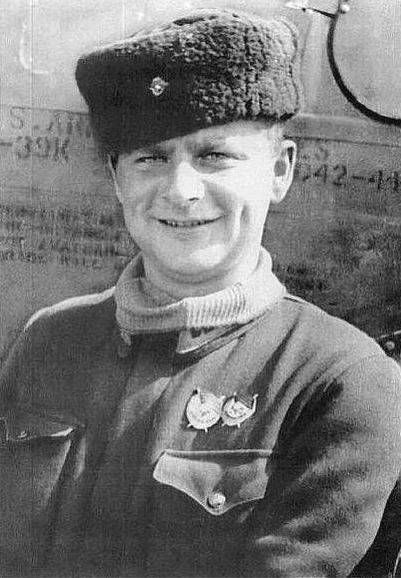
Dmitry Borisovich Glinka was an outstanding air fighter and at the same time a patient and benevolent mentor for young pilots. He was distinguished by fiction and pedagogical tact. The pupil of the pilot, Hero of the Soviet Union, Grigori Ustinovich Dolnikov, recalled after the war: “Dmitry replaced his shouts and suggestions with his irony, and this irony acted better than any reprimands.” The manner of conducting an air combat pilot in any circumstances was attacking, open, without any disguise. Air battles took place with maximum loads for the pilot and the aircraft.
After the end of World War II, Dmitry Glinka graduated from the Air Force Academy (1951), commanded the regiment, went into reserve in 1960 in the rank of guard colonel. He passed away 1 March 1979, at the age 61, he was buried in Moscow at Kuntsevo Cemetery.
Alexander Koldunov
Alexander Koldunov - twice Hero of the Soviet Union, the most productive ace from among those who fought on the Yak fighters. During the war years he made 412 combat missions, conducted 96 air battles, in which he personally shot down 46 aircraft and 1 in the group. Throughout the war, Yakovlev fighter jets flew - Yak-1, Yak-9, Yak-3.
Born 20 September 1923 year in a small village in the Smolensk region. In the Soviet aviation managed to go a long way, rising to the rank of Chief Marshal of Aviation. The army was in 1941 year. In 1943, he successfully graduated from the Kachin Aviation School. Initially, he was distributed to the reserve regiment, but with his perseverance he managed to achieve transfer to the active army. Although the young pilot got to the front only in the 1943 year, this did not prevent him from becoming one of the most famous Soviet aces pilots.
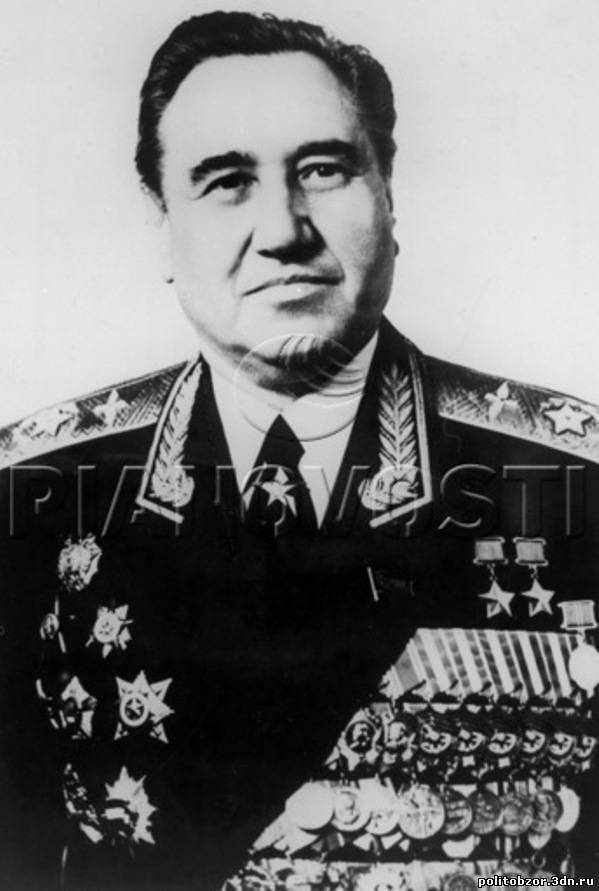
The fighter pilot won his first victory in his third combat sortie. It happened this 21 July 1943 of the year. Over Seversky Donets Koldunov shot down a dive bomber Ju-87. This first victory cost him the Yak 16 holes. A few days later, Koldunov’s plane was shot down by a pair of “hunters” that had fallen from the clouds and the pilot himself was slightly injured. In this truly “abnormal” situation, the 19-year-old pilot was not taken aback: he turned off the engine, planned and neatly landed his plane not far from the airfield. Already after 2 of the day, he was discharged from the hospital and again raised the repaired "Yak" to the sky.
From the autumn of 1943 until the end of the war, a young pilot commanded a squadron. The most distinguished himself in the battle of the Dnieper, the liberation of Right-Bank Ukraine, the Iasi-Chisinau and Budapest operations. Most clearly, his talent as a fighter pilot was revealed in the battles of 1944. Reports of his victories can be safely put at the heart of Hollywood thrillers or heroic novels, when a hero who does not know defeats goes from one victory to another. Moreover, in this case, the plot would have a solid historical base. Alexander Koldunov, who destroyed almost fifty German planes, did not lose any of his cars. The pilot was wounded twice, returned to the airport on a damaged plane, but was not shot down.
In the autumn of 1944, Alexander Koldunov had the opportunity to fly on the new Yak-3. This fighter came out really excellent. The pilots literally fell in love with him. When creating this combat vehicle, Yakovlev succeeded in maintaining all the good qualities of the Yak-1, adding new ones. The new fighter significantly reduced in weight. Instead of heavy wooden wing spars became duralumin, which positively affected the strength and lightness of the aircraft. The aerodynamic qualities of the aircraft also improved, in particular, the tail wheel was made retractable, which made it possible to reduce drag and increase speed.
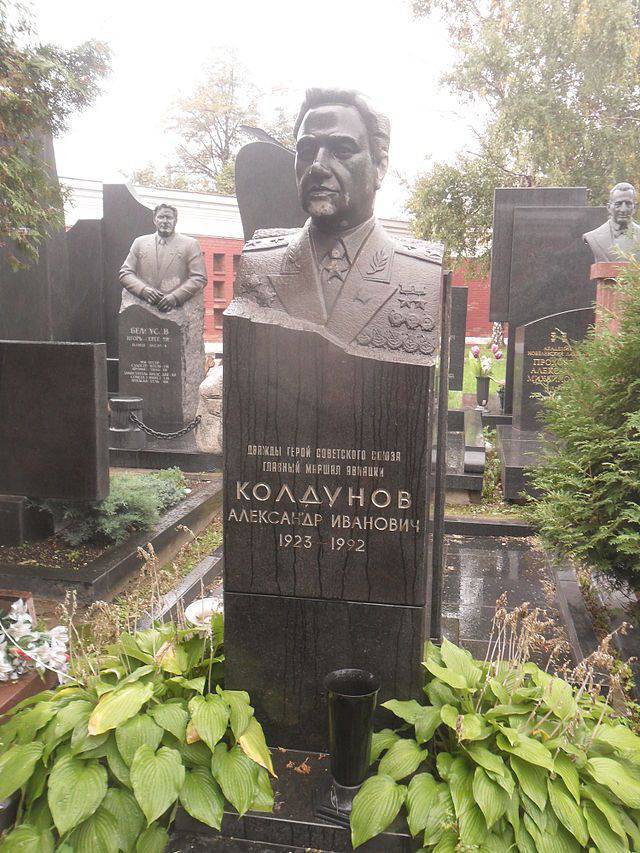
The famous pilot spent his last fight to the west of the Austrian capital, near St. Palten. There he met with the Fw-190 Five, armed with bombs. The enemy aircraft went quietly, apparently not expecting the appearance of Soviet cars. Koldunov took advantage of this and suddenly attacked the enemy, one of the Fokkers, who had not managed to get rid of the bombs, exploded in the air. Having shot one plane of the enemy, the Soviet ace went to the tail of the second and the enemy plane enveloped in flames rushed to the ground.
After the war Koldunov continued service in the Air Force and quite successfully. In 1951, he graduated from the Air Force Academy at Monino. So began his forward movement on the army career. In 1977, he became a Marshal of Aviation and led the Air Defense Forces of the country, and in 1984, Alexander Koldunov was awarded the title of Chief Air Marshal. Unfortunately, his career ended on a minor note. In 1987, he was removed from his post due to the flight of the German pilot Mathias Rust. This is how the famous Soviet pilot-ace, whom no German fighter pilot was able to shoot down during the war years, lost his post because of the German amateur pilot. He died in Moscow on 7 on June 1992, at the age of 68, and was buried in the Novodevichy cemetery.
Nikolai Mikhailovich Skomorokhov
Nikolai Mikhailovich Skomorokhov - Twice Hero of the Soviet Union. During the war years he made more than 600 sorties, conducted 143 air combat with the enemy, in which he personally shot down 46 and as part of the 8 group of aircraft. In addition, 3 destroyed an enemy bomber on the ground. He flew fighters LaGG-3, La-5 and La-7.
Nikolai Skomorokhov was born in 1920, in the village of Lapot, Saratov Province, into an ordinary peasant family. In December, 1940 of the year voluntarily went to the Red Army, and in March 1942, he graduated from the Baltic Military Aviation Pilot School. He began to fight in December 1942 of the year, and opened his personal account of victories in January 1943 of the year. In one of the sorties over the mountains north of Lazarevskaya, he found a reconnaissance plane Fw-189 over the front line, which he attacked from above. It seemed that the long queue literally riddled Rama, but when Nikolay turned to trace the fall of the enemy plane, he noticed with surprise that he was keeping himself in the air and even maneuvering, trying to evade another attack. As a result, the fight lasted a few minutes, while Skomorokhov did not succeed in aiming his LaGG-3 at the German's forehead and shooting him. As he then thought, he found the key to future victories.
However, the days went by, the number of combat sorties grew, and this "frame" remained the only aircraft shot down. Therefore, the future pilot-ace seriously sat down to study - he began to delve into the physical calculations and schemes, decided to learn more about the theory of shooting, which brought his success. The number of air victories began to grow. In the battles on the Kursk Bulge, the Skomorokhs in one battle shoot down two enemy Me-109. At the same time, one of them managed to shoot down in a critical, deadly situation, when the pilot was able to start the stalled engine and dealt with the German, who was already anticipating easy prey. At the end of August, 1943, which had been forgotten in sergeants, Skomorokhov, was finally assigned an officer rank - junior lieutenant.
It is worth noting that Skomorokhov often managed to shoot down several enemy aircraft in one battle. But the most famous of his air combat, which had no analogues in history, captain Nikolai Skomorokhov spent 16 January 1945 of the year in Hungary. Together with his wingman, he took off for free hunting and in the Tarjai region northwest of Budapest, the pilots met three groups of Ju-52 transport aircraft (16 vehicles), which were accompanied by 38 Me-109 cover fighters. In such a situation, Soviet pilots decided to attack the enemy - together against 54 aircraft. As a result of this impudent attack, Skomorokhov personally shot down the 2 of the Me-109 fighter and one transport Ju-52, and his wingman destroyed two more vehicles.
The last victory of his Soviet pilot-ace scored 25 on April 1945, in the area of Vienna, shooting down the Fw-190 fighter. Skomorokhov himself was never injured during the war, his plane did not burn and was not shot down. Describing Nikolai Skomorokhova, the commander of the 31 th Fighter Regiment, Lieutenant Colonel G. D. Onufienko wrote: “In air battles Skomorokhov is slow, but decisive, calm and calculating. The pilot is demanding of himself and his subordinates. Enjoys exceptional prestige among the entire personnel of the fighter regiment. In a combat situation does not know fatigue. " It is worth noting that the famous rule: “a fighter defends only with an attack” was the law in his combat sorties.
After the war, Nikolai Skomorokhov remained in the service in the Air Force. He graduated from the Military Academy named after MV Frunze, commanded various units and formations. In 39 years he became a general, and in 1981, he was awarded the rank of Marshal of Aviation, was the Honored Military Pilot of the USSR. His life was tragically cut short in a car accident that took place on October 16 1994, buried in Moscow at the Novodevichy Cemetery.
Vitaly Popkov
Vitaly Popkov - twice Hero of the Soviet Union. During the war years, 475 carried out combat missions, conducted 117 air battles, in which he personally shot down an enemy aircraft 41 and another one in the group. He flew fighters LaGG-3 and La-5. The facts from the biography of this pilot-ace formed the basis of the famous film by Leonid Bykov “Only the“ old men ”go into battle.
Vitaly Popkov was one of the few people who were destined to see the monument to himself during his lifetime. A monument to the Soviet asu was installed in Moscow at Samotek. It is said that once, when war veterans gathered in a public garden near a monument on some anniversary occasion and poured it on front 100 grams, they were attacked by a guard. What was his astonishment, when in one of the violators of public order, he learned of the famous ace pilot perpetuated in bronze.
Vitaly Popkov was a native Muscovite, he was born in Moscow 1 May 1922, in a working class family. In the Red Army hit the 1940 year. In 1941, he graduated from the Chuguev Military Aviation Pilot School. It is worth noting that he went through all possible steps of flight training: starting with the aircraft modeling community, then with a glider school, flying club and, finally, Chuguev. He graduated from college in the fantastic edition of 1941 of the year, in which 59 turned out to be future Heroes of the Soviet Union, among his classmates was, for example, the Soviet ace number one - Ivan Kozhedub.
Since the beginning of World War II, his favorite service became for Popkov and after the sixth report he wrote, in the spring of 1942, when the situation on the fronts began to deteriorate rapidly, Sergeant Popkov was sent to the front. He got into the glorious 5-th Guards Fighter Wing from the 207-th Fighter Aviation Division on the South-Western Front.
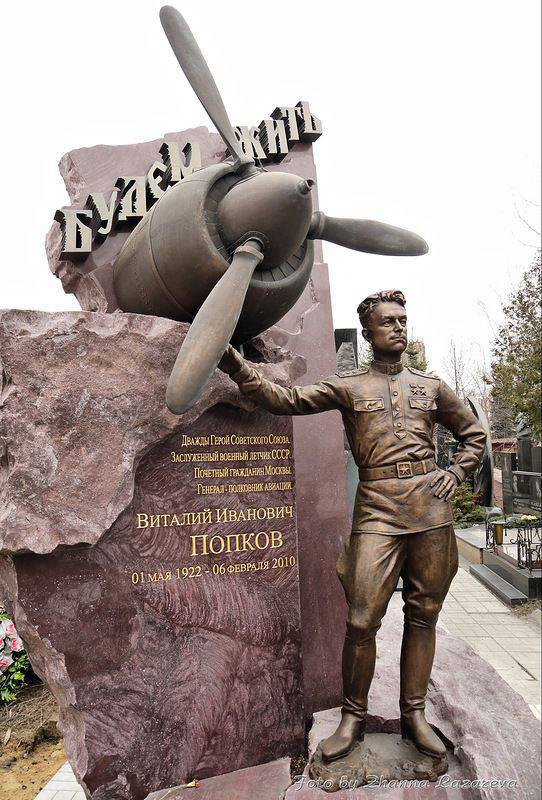
His first plane, the future ace pilot shot down in June 1942 of the year. Remembering that fight forever. The battle took place near the town of Holm, Popkov flew into the sky on LaGG-3 and shot down a German bomber Do-217. It all started with the fact that the pilot, who was rushing into battle, was accused of violating flight discipline. During one of the training sessions, he practiced with an overlap at low altitude. For this, Popkov was appointed an eternal attendant in the kitchen. He was told that the fight was not tolerant. One day, in the early June morning, a pair of Dornier-217 and two Me-109 covers appeared over their airfield. They began to iron the airfield, and then Popkov decided to take off to meet them. On the plane, he jumped right in the apron in which he was peeling potatoes. He managed to shoot down one bomber from the very first approach, the Germans apparently didn’t like it much and left. After this fight, Popkova opened the way to the sky.
Throughout the war he passed with the same passion and determination. Among the front-line pilots, he was called "ace of the highest class", "knight of air", "elusive", emphasizing his fighting passion, courage, skill of the pilot, who distinguished this fighter. He always sought to be on the point of attack. In the regiment on the account of Popkov was the largest number of enemy aircraft shot down. At the same time he tried not to return from the flight "empty-handed." If the air encounters with the enemy did not happen, the shells were sent to ground targets.
After the end of the war, he continued to serve in the Air Force. In 1951, Vitaly Popkov graduated from the Air Force Academy, and in 1964, the Military Academy of the General Staff. In 1968, the celebrated pilot was given the rank of lieutenant general of aviation. Since 1980, he has been teaching at the Air Force Engineering Academy. Vitaly Popkov died 6 in February 2010, at the age of 87 years. He was buried in Moscow at the Novodevichy cemetery.
Based on materials from open sources
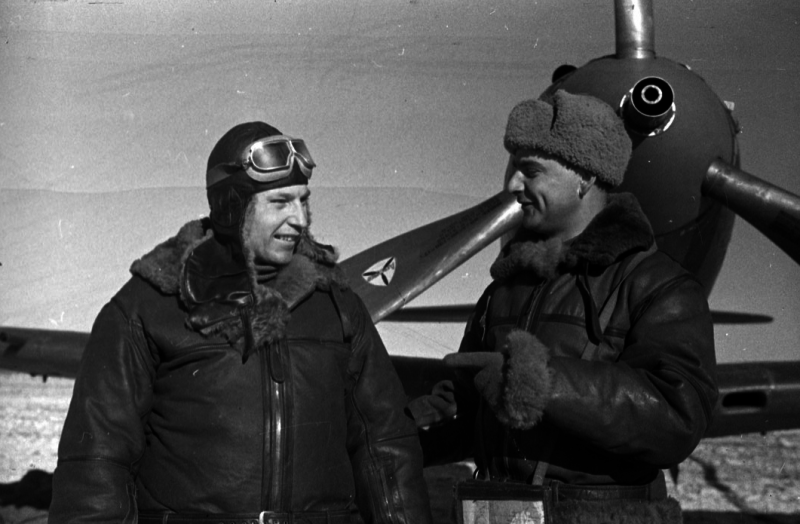
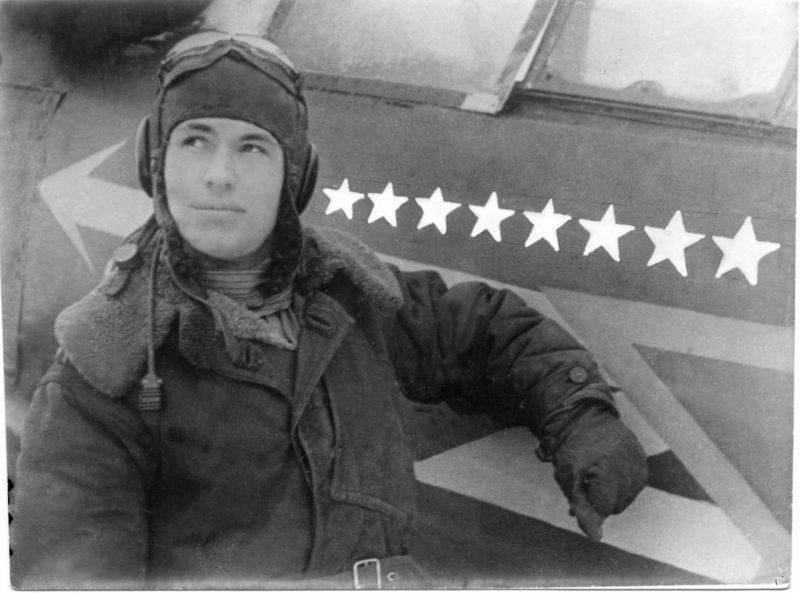
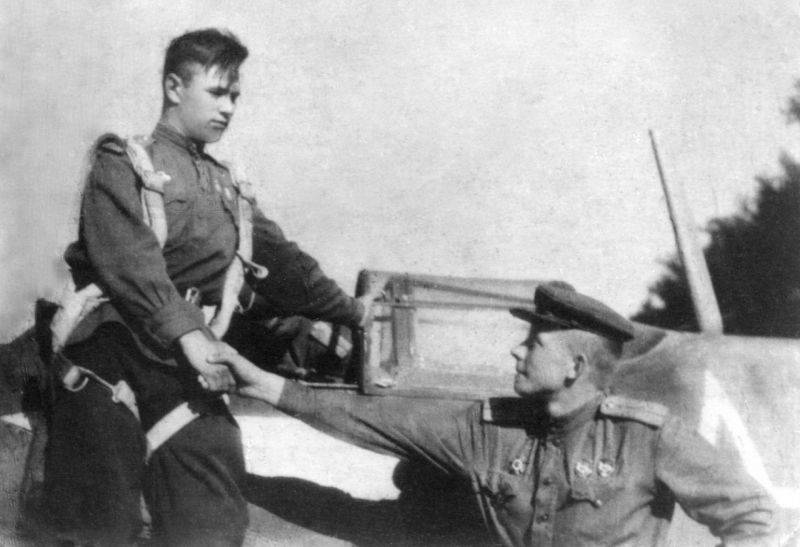
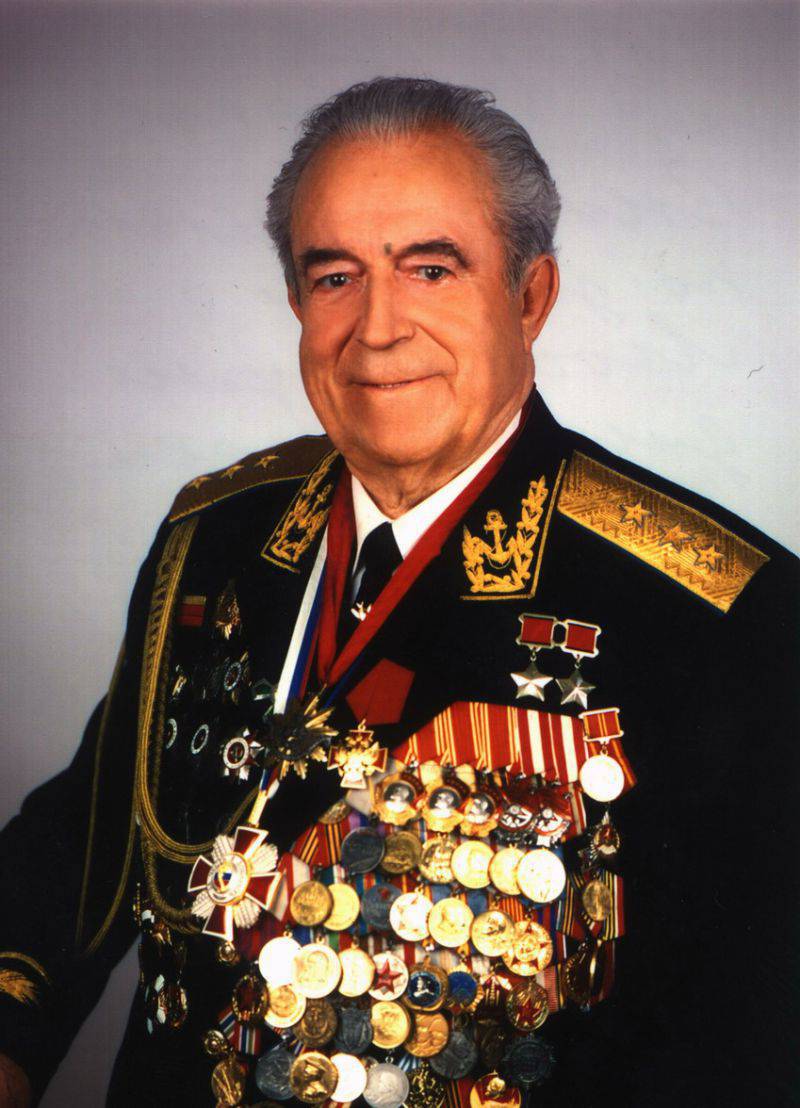
Information